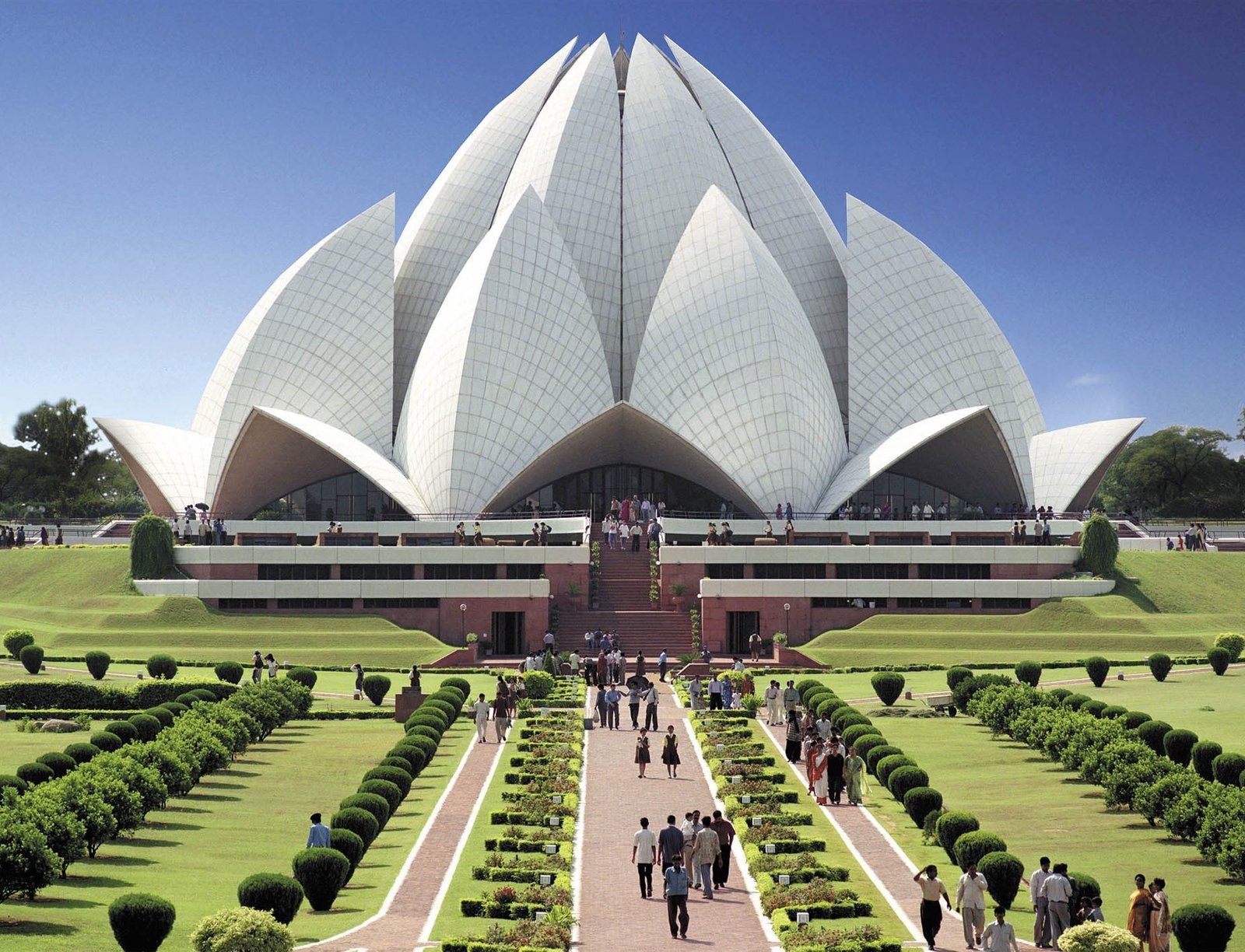The Lotus Temple, located in Delhi, India, is a Baháʼí House of Worship that opened in December 1986. Remarkable for its flower shape, it has become a prominent attraction in the city. Like all Houses of Worship, the Lotus Temple is open to everyone, regardless of religion or any other qualifications. According to Shoghi Effendi, a Bahá’í temple is a “silent teacher” of the Bahá’í faith. The building is made up of 27 independent marble-clad “petals” arranged in groups of three to form nine sides, with nine doors opening onto a central hall with a height of just over 34 meters and a capacity for 2,500 people. The Lotus Temple has won numerous architectural awards and has been featured in many newspaper and magazine articles.
Worship
The Baháʼí Faith teaches that a Baháʼí House of Worship should be a space for people of all faiths to come together, reflect and worship. Anyone can enter the Lotus Temple regardless of religious background, gender, or other distinctions, as is the case with all Baháʼí houses of worship. The sacred scriptures not only of the Baháʼí faith but also of other religions can be read and / or chanted, regardless of the language; on the other hand, reading non-biblical texts is prohibited, as is giving sermons or lectures, or raising funds. Choirs can sing musical interpretations of readings and prayers, but musical instruments cannot be played indoors. There is no set pattern for worship services and ritual ceremonies are not allowed.
Structure
All Baháʼí Houses of Worship, including the Lotus Temple, share certain architectural elements, some of which are specified in the Baháí scriptures. ʻAbdu’l-Bahá, the son of the founder of the religion, stipulated that an essential architectural character of a House of Worship is a nine-sided circular shape. While all current Baháʼí Houses of Worship have a dome, this is not considered an essential part of their architecture. The Baháʼí scriptures also state that paintings, statues or images are not to be displayed within the House of Worship and that pulpits and altars are not to be incorporated as an architectural feature (readers can stand behind simple portable lecture stands).
Inspired by the lotus flower, the design of the House of Worship in New Delhi is comprised of 27 separate marble-clad “petals” arranged in groups of three to form nine sides. The nine doors of the Lotus Temple open to a 34.3 meter high central hall with capacity for 1,300 people and up to 2,500 in total. The surface of the House of Worship is made of white marble from the Penteli Mountain in Greece, the same marble used in the construction of many ancient monuments (including the Parthenon) and other Baháʼí buildings. Along with its nine ponds and surrounding gardens, the Lotus Temple property encompasses 26 acres (105,000 m²; 10.5 ha).
The Lotus Temple is located near Okhla NSIC and the Kalkaji Mandir Subway Station is only 500 meters away.
The temple is located in the town of Bahapur in New Delhi, National Capital Territory of Delhi. The architect was an Iranian, Fariborz Sahba, who now lives in La Jolla, California, after living for a few years in Canada. He approached him in 1976 to design the Lotus Temple and later supervised its construction. Structural design was done by British firm Flint and Neill over the course of 18 months, and construction was done by ECC Construction Group of Larsen & Toubro Limited at a cost of $ 10 million. Most of the funds needed to purchase this land were donated by Ardishír Rustampúr of Hyderabad, Sindh, Pakistan, whose will dictated that his life savings would be used for this purpose. A portion of the construction budget was saved and used to build a greenhouse to study indigenous plants and flowers that would be appropriate for use on the site.
Of the temple’s total electricity use of 500 kilowatts (kW), 120 kW is provided by solar energy generated by solar panels in the building. This saves the temple 1,20,000 (1.2 lakh) rupees per month. It is the first temple in Delhi to use solar energy.


0 Comments